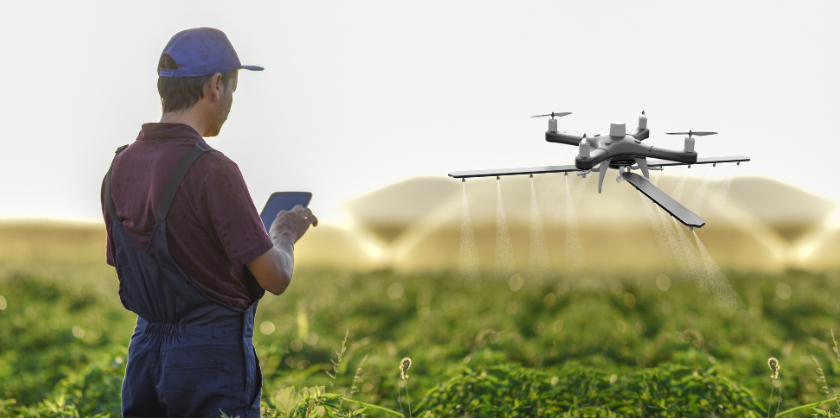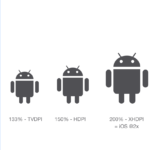Let’s face it farming isn’t what it used to be, and that’s a good thing. While traditional farming techniques still hold incredible value, we’re entering a new era where innovation isn’t just a buzzword—it’s a necessity. If you’ve been wondering how to integrate technology with traditional farming without losing the soul of your land or the wisdom of past generations, you’re not alone. Farmers around the world are asking the same question and many are finding the answer in smart, scalable tech that complements the craft, not replaces it.
In this post, we’ll explore how farmers are bridging the gap between time-tested methods and new-age tools. Whether you run a small family farm or manage large-scale operations, there’s something here for you. From drones to data to dirt, let’s dig into the future of farming—rooted in tradition, powered by technology.
Why Combine Traditional Farming with Modern Tech?
Before we jump into the how, let’s take a second to talk about the why. The agricultural sector is under more pressure than ever: rising demand for food, increasing climate unpredictability, labor shortages, and shrinking profit margins. It’s no longer just about growing more—it’s about growing smarter.
A few realities:
Traditional methods are powerful, but they can be labor-intensive and inconsistent under modern conditions.
Technology isn’t a replacement—it’s a tool to enhance accuracy, reduce waste, and improve yields.
Sustainability is key—the right blend of tech and tradition can help reduce environmental impact while maintaining soil health and biodiversity.
Step-by-Step: How to Integrate Technology with Traditional Farming
Let’s break it down. Here’s a detailed, real-world guide on how to blend tech into your existing farming practices.
1. Start with Precision Agriculture
One of the most practical starting points is adopting precision agriculture. It uses GPS, sensors, and data analytics to make farming more accurate and resource-efficient.
How it fits with traditional methods:
You’re still planting, watering, and harvesting as you always have—but now with hyper-local insights. Instead of watering the whole field, you water only where it’s needed. Instead of blanket fertilization, you fine-tune by soil zone.
Tools to consider:
GPS-enabled tractors for straight-line planting and efficient coverage
Soil moisture sensors to monitor real-time irrigation needs
Variable rate technology (VRT) to adjust fertilizer application on the go
2. Use Drones and Satellite Imaging for Crop Monitoring
Remember walking row after row to check on crops? Drones can do it in minutes—and with better data. Satellite imaging and drone footage provide an aerial view of your entire operation, helping you spot pests, drought stress, or disease before it’s visible to the naked eye.
Traditional + Modern:
Walk the fields and check the skies. This combo helps validate data and builds a feedback loop between observation and action.
Use cases:
Mapping crop health over time
Planning harvest times
Spot-treating problem areas with pinpoint accuracy
3. Tap Into IoT (Internet of Things) for Smart Farming
IoT isn’t just for smart homes—it’s transforming farms too. These devices connect to each other and to your phone or dashboard, giving you real-time control and insights.
Examples:
Smart irrigation systems that turn on only when the soil is dry
Livestock wearables that track movement, health, and breeding cycles
Climate sensors that log rainfall, temperature, and humidity over time
Why it works:
You can check your farm’s vitals from anywhere. Whether you’re in the barn or away at a co-op meeting, tech gives you peace of mind and data you can act on.
4. Embrace Data Analytics for Better Decision-Making
Here’s the truth: most farmers already have tons of data they just don’t always know what to do with it. That’s where analytics comes in. Software platforms can turn raw information into visual dashboards and simple recommendations.
What to analyze:
Crop performance by field
Fertilizer efficiency
Harvest timelines
Market trends and forecasts
Tools worth exploring:
FarmLogs, Ag Leader, or John Deere Operations Center
Simple Excel-based models for smaller operations
You don’t need to be a data scientist. Just start by tracking and comparing. The goal is to make better choices not to drown in spreadsheets.
5. Combine Traditional Soil Care with Lab Testing
Good farmers know that soil is life. While you probably already rotate crops, use compost, and avoid overworking the land, you can take things to the next level with periodic lab testing.
Modern advantage:
Soil labs can analyze nutrient levels, pH balance, organic matter, and even microbial activity. This gives you the scientific backup to support your instinct and experience.
Tip:
Use the lab results to adjust your compost ratios or cover crop strategy not to abandon them. This is where traditional farming shines in collaboration with technology.
6. Automate Where It Makes Sense
You don’t need a robot farm to benefit from automation. Start with one or two time-consuming tasks and see if tech can take them off your plate.
Options include:
Automatic feeders and waterers for livestock
Greenhouse ventilation systems
Self-propelled seeders or sprayers
Traditional mindset:
Think of automation as an extra pair of hands not a replacement. Use it to free up your time for tasks that do require your attention.
7. Use Mobile Apps for Management and Planning
From inventory tracking to planting schedules, there’s an app for just about everything. Many are designed specifically for farmers and include offline functionality for when you’re out in the field.
Favorites among farmers:
AgriApp (crop management)
Farmlogs (field data tracking)
Taranis (pest/disease scouting via AI)
Even basic apps like Google Sheets can make your planning more streamlined when combined with old-school record keeping.
Case Study: Bringing Tech to a Small Family Farm
Let’s take a real-world example.
A small organic farm in Iowa wanted to boost yields without compromising their eco-friendly philosophy. Here’s how they approached how to integrate technology with traditional farming:
They installed solar-powered soil moisture sensors to optimize water use.
Used drone scouting every two weeks to detect early-stage pest outbreaks.
Kept detailed field logs in a cloud-based system, which helped them plan better crop rotations and improve organic compost use.
The result? A 15% increase in yield, better soil retention, and less wasted water—all while sticking to their traditional values.
Benefits of Blending Tech with Tradition
Let’s recap what you stand to gain:
✅ Higher Yields
Smart planting, watering, and harvesting means more produce with less effort.
✅ Cost Savings
Automation and precision tools reduce fuel, labor, and supply expenses.
✅ Better Soil and Ecosystem Health
Data-backed decisions make organic and regenerative practices more effective.
✅ Time and Labor Efficiency
Focus more on strategy, less on repetitive tasks.
✅ Resilience
With climate shifts and unpredictable weather, the ability to adapt quickly is essential.
Common Fears—And Why You Shouldn’t Be Afraid
A lot of farmers hesitate to introduce technology because they worry it’ll be expensive, confusing, or that it might disrupt the balance of their operation. These concerns are real—but they’re also manageable.
“It’s too expensive.”
Start small. A single smart sensor or mobile app can make a big difference. Many regions offer grants or subsidies for sustainable farm tech.
“I don’t trust machines over instinct.”
You don’t have to. Use the data to support your gut, not override it.
“I’m not tech-savvy.”
Modern agtech tools are getting more user-friendly every year. If you can use a smartphone, you can use most of this gear.
Final Thoughts: The Best of Both Worlds
Learning how to integrate technology with traditional farming isn’t about abandoning what’s always worked. It’s about evolving in a way that respects your roots while preparing for what’s next.
Think of it like this: your great-grandparents probably marveled at tractors and irrigation. You’re just continuing the tradition of embracing tools that help you work smarter, not harder.
So take that next step. Try one new tech tool this season—whether it’s a drone flyover, a soil sensor, or a smart irrigation timer. Keep what works, drop what doesn’t. But don’t close the door to progress.
Because the future of farming? It’s already here. And it looks a lot like you—just with a little help from a satellite.

















Leave a Review